8 Tips for Container Gardening – Container Garden Tips From Grooming to Fertilizing
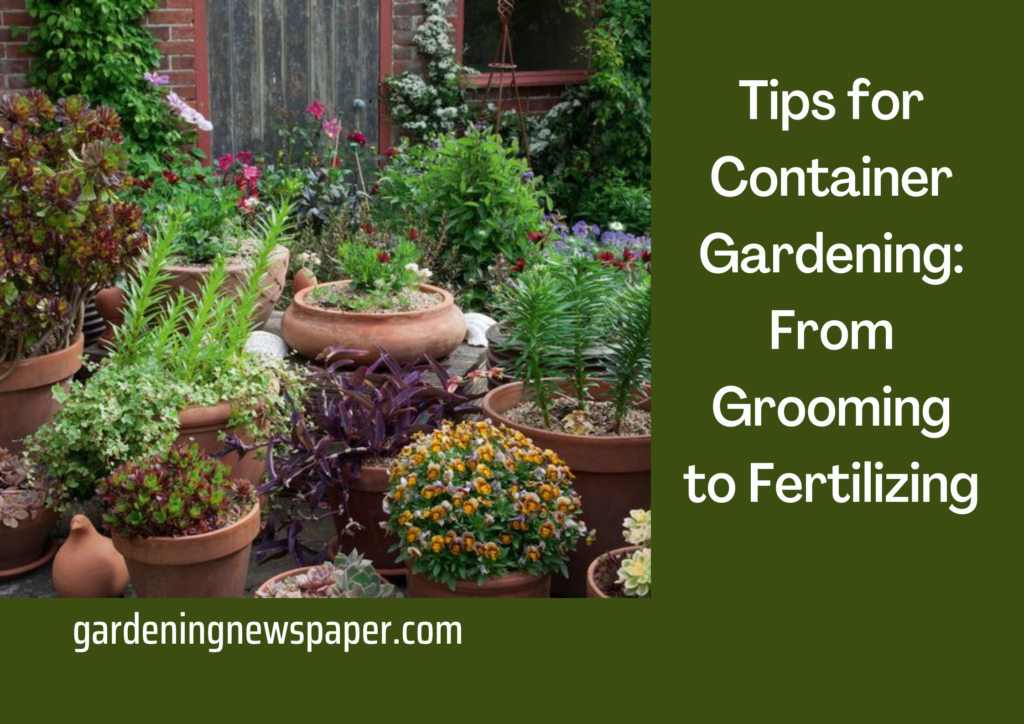
How do you make a successful container garden? Well, we may think that anyone can become successful in container gardening. Many gardeners find it easy to start gardening. However, it is important for us to understand that we didn’t reach the finish line yet!
We must know the basics of container gardening, and some important gardening safety tips that we need to follow before starting our container gardening journey. Later comes the real deal, i.e; maintaining the plants, caring for them, and watching them thrive beautifully. This post will provide you with some of the most reliable and working container gardening tips from grooming to fertilizing. Happy reading and happy gardening to you!
Container Gardening Tips – From Grooming to Fertilizing!
Here are the container gardening tips from grooming to fertilizing. Read till the end to know the in-depth information on what type of fertilizer is good for which type of plants.
Pinching
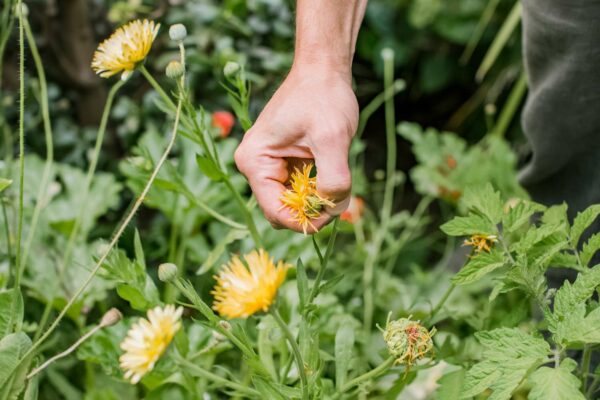
Pinching plants refer to removing the growing tip of your plants. Once you pinch the tip, new shoots start to develop to fill the entire plant. This technique is very important if your plants get too tall than necessary. Pinching the tip of the plant results in a lowering of the plant’s height and makes the plant bushier. This technique also helps maintain a certain shape of the plant.
Deadheading
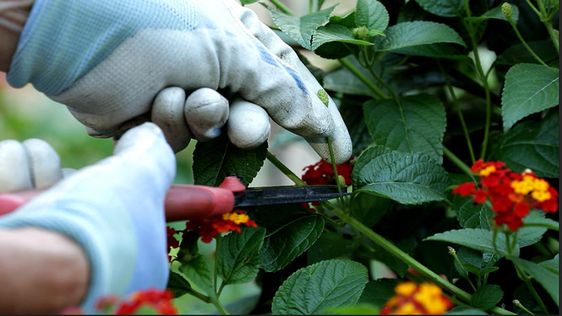
This term applies to all flowering plants. Once the plants have finished flowering and all that is left are dead flower heads, the plants look very unsightly. Moreover, the dead flower heads also promote diseases to develop and also make the plant flowerless. Once the flowers start to decline, cut the flower stalk out; however, some plants do not require deadheading including petunias, vinca, begonia, and hibiscus as they often have the mechanism to de-head themselves once their flowers mature.
Regular Clean up
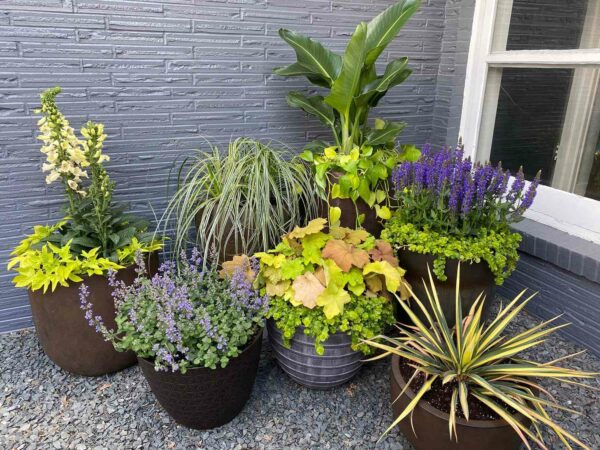
This technique refers to the removal of leaves and flower parts that are affected by insects, diseases, or just by natural decline.
Keeping your container garden tidy is not as difficult as you think it would be. The most difficult part of this task is if you have a lot of container plants in your house that you need to take care of. If the number of plants in your area is too much to overwhelm you with the cleaning, what you can do is slowly take your time grooming your plants.
Trimming the climbers
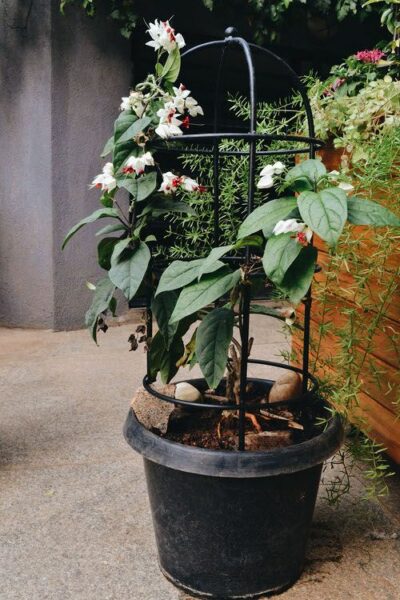
Well, we’re sure you do not want your sneaky neighbors to bother you all the time. So, why do that for plants? Make sure to trim the climber plants at regular intervals or whenever necessary if you see them clinging to other plants. This way, the climber plants will not climb over other plants and bother them. Also, you may use support sticks to let them grow in an even manner.
Move the containers
Yes, move them! By this, we do not mean that you make them dance across your container garden all the time. Different plants need different amounts of sunlight, air, and water. The air is a natural element and we will discuss the water part in the next section. In the case of sunlight, make sure to rotate or move the containers as and when necessary depending on the seasons so that every plant gets enough of it.
Water the plants thoroughly
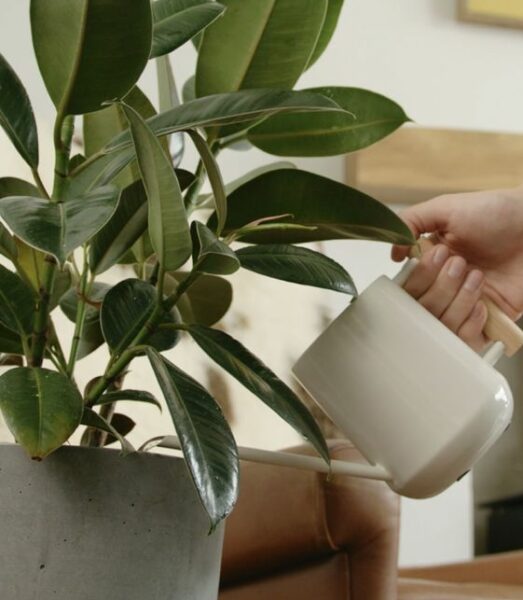
“Watering regularly” doesn’t mean drenching your plants with water all the time. Here’s a little catch! Unlike our regular garden, container plants will not be able to enjoy the benefits of the groundwater and moisture. Therefore, make sure to cover the soil with water thoroughly and check the water and drainage levels regularly in the case of water container plants.
Mulching
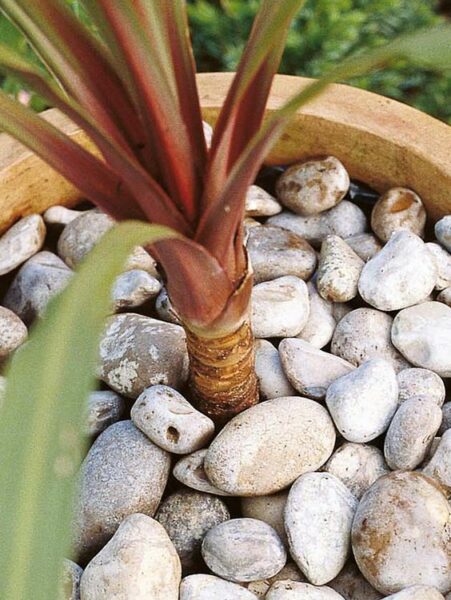
Weather is not always the same. You may see a heavy storm or a downpour with heavy droplets or a little snow suddenly. In these cases, mulching is the savior for all container plants. Mulch your beautiful plants with beautiful things like pebbles, and moss, or with something like cedar bark. This can prevent damaging the roots due to rains, or drying up quickly due to excess drainage of water, etc.
Fertilizing 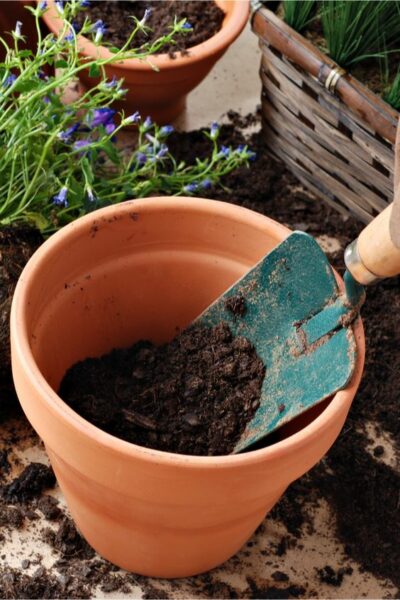
Fertilizing your container plants will always help them thrive free from pests. In the case of containers, we must understand that there is soil only up to a certain level and there is a constant need for water and a proper drainage mechanism at the same time. Therefore, providing the plants with enough nutrients from time to time is an important pointer that we need to keep in mind. Make sure to use good slow-release and water-soluble fertilizer in the potting mix and use it for the soil.
Types of fertilizers to use in container gardening
It is important to take note that most all-purpose potting mixes have low nutrients so you need to add fertilizers at some point. This is especially true if your plants are still starting to establish themselves or are already blooming.
Seaweed Extracts
Fertilizer recipes made from seaweed extracts contain a pretty good amount of auxins, alginic acid, and gibberellins which are necessary for the growth and development of plant shoots. Moreover, the addition of seaweed extracts can also improve the water-retaining abilities of soil.
Fish Emulsion
This type of fertilizer comes from fish processing waste. The fish parts are fermented in molasses for a week before applying a diluted solution of it. This type of fertilizer contains a lot of nitrogen which is perfect for improving the foliage of the plant. This works best for lettuce and similar container plants.
Flower Booster Fertilizers
This type of fertilizer is great for plants that are about to bloom. It is high in phosphorus and potassium to encourage the plants to bloom more. Apply the fertilizer as soon as you see the flower buds start forming.
Vitamin B
Do you know we humans and plants have something in common besides being alive or dead? Plants also need Vitamin B just like humans do. Fertilizer recipes with Vitamin B are good to ease transplantation shock for young plants transferred to a new and bigger pot.
Root stimulators
If you are trying to grow plants from seeds, then you need root stimulators to encourage the plants to root and grow properly. This type of fertilizer is also crucial if you are growing plants from cuttings.
Fertilizers are crucial for the success of your potted plants. Without them, your plants will appear stunted and lanky. Make sure that you know about the nutrient requirement of your plants so you do not overdose them with too much fertilizer input.
Along with following the list of container gardening tips discussed here, make sure to pick the right kind of container for the plants, share love and care for the container gardening plants, make sure to provide them with sufficient water and nutrients, and then you become a successful container gardener. We hope this post on gardening tips could help you become a successful container gardener.
